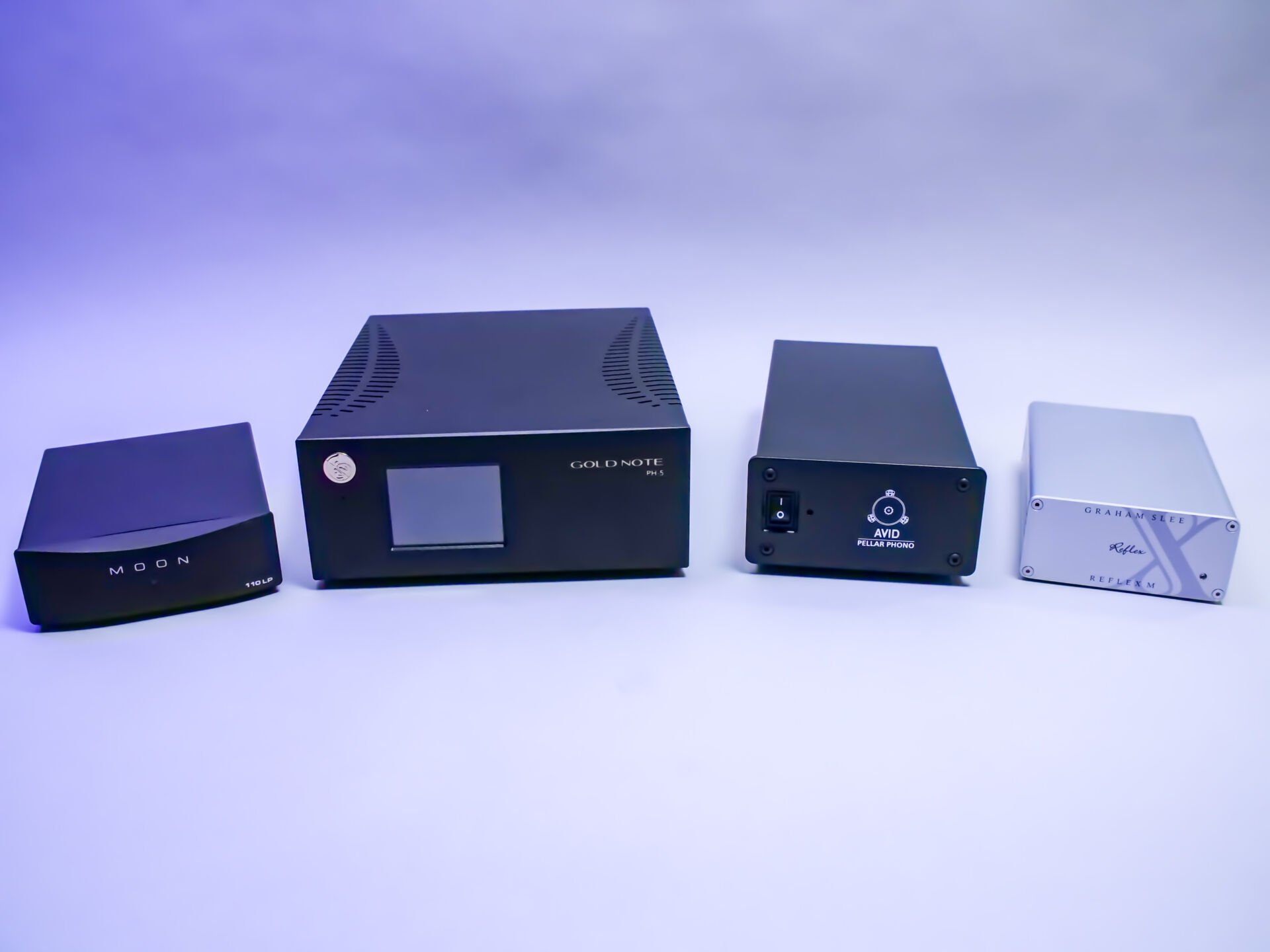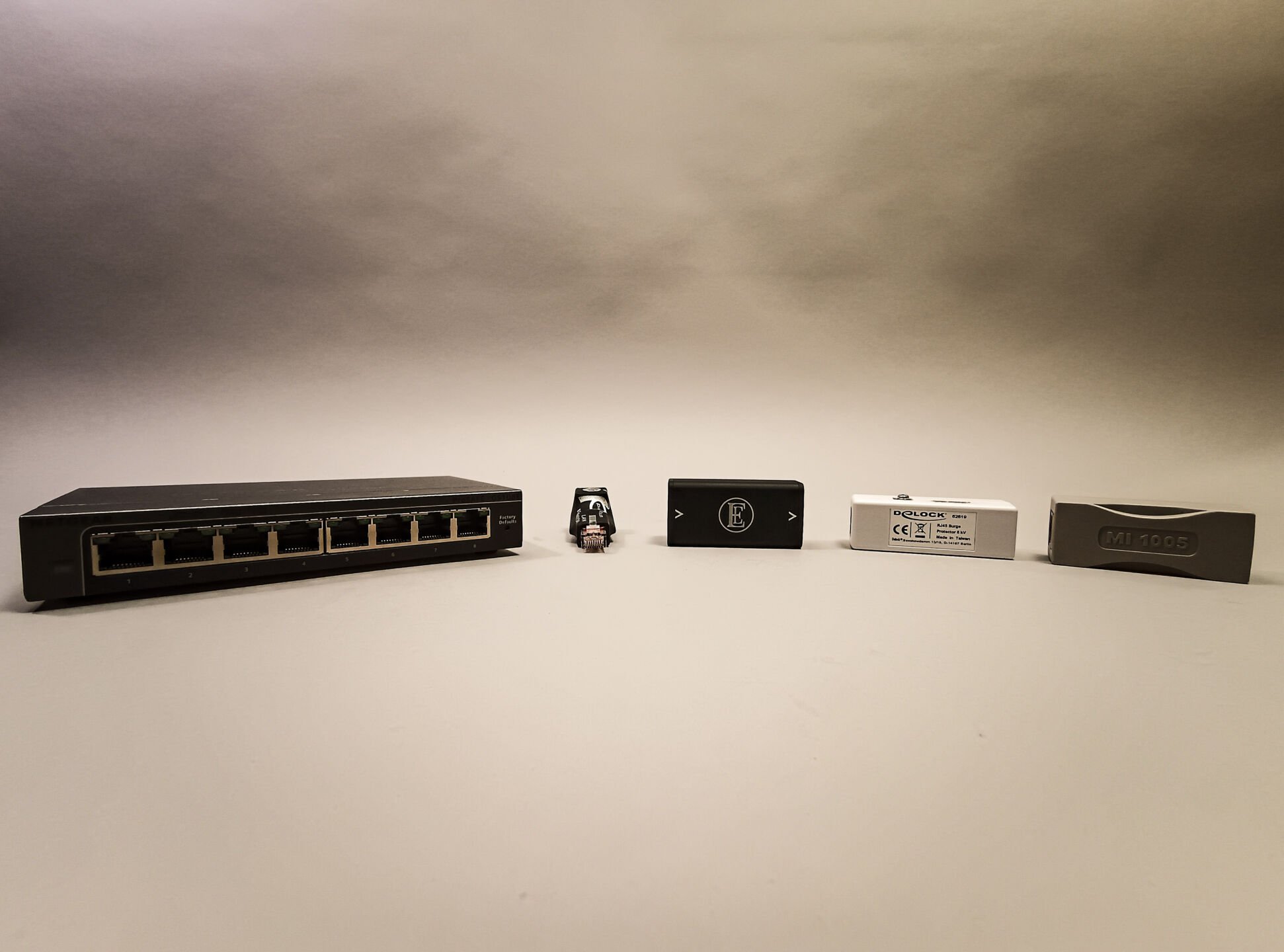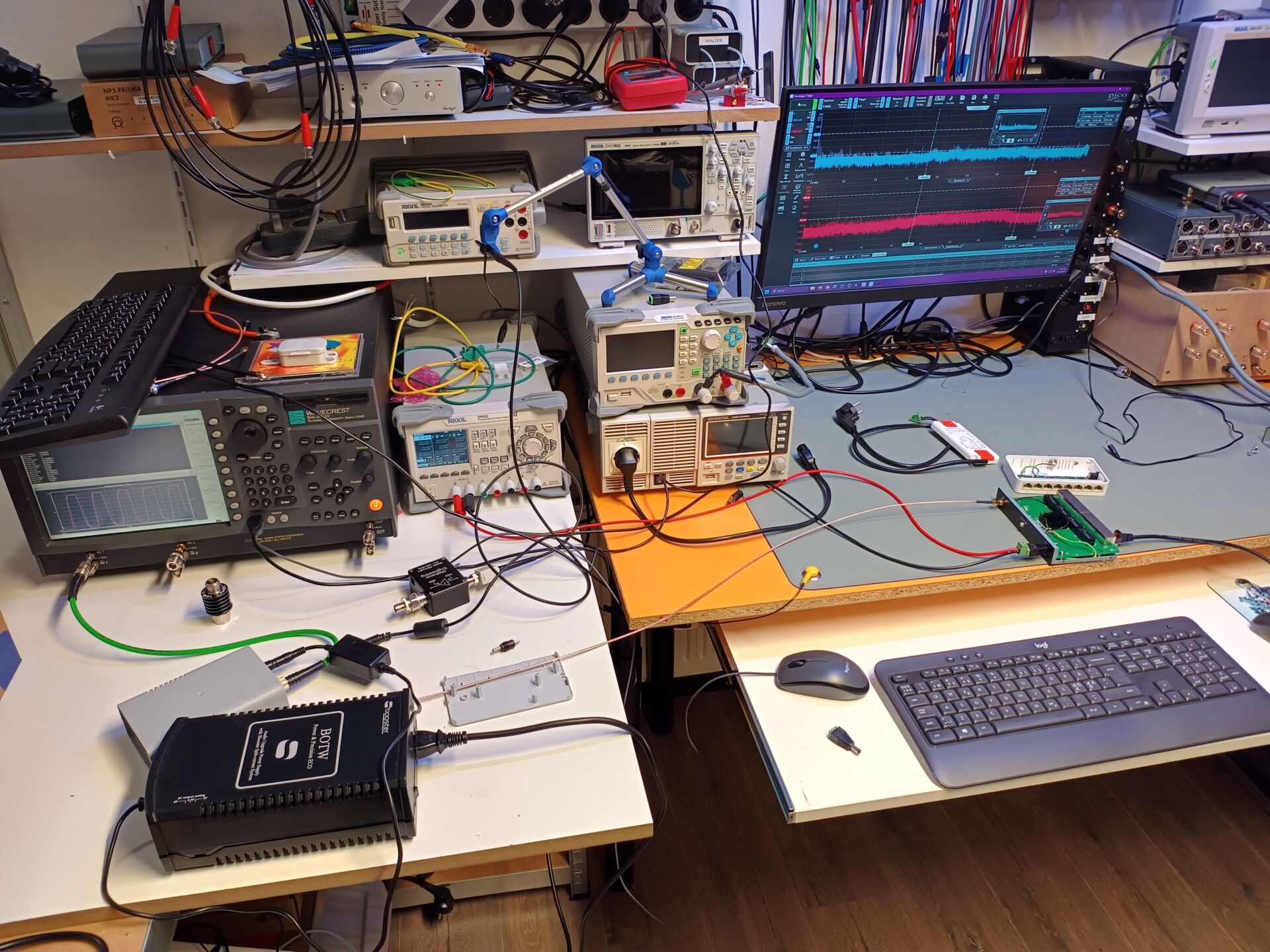

Intro
Contents
The Canadian brand MOON has a rich history. This year, the brand is forty years old. It has therefore – not entirely surprisingly – released a 40th Anniversary Edition. The subject of today – the MOON 680D – does not fall under that new, limited edition range. But this model has benefited from forty years of knowledge. Let’s see exactly what that means.
The new MOON 680D (in fact a V2) – is a d/a converter with a built-in MiND streamer. That means you have a great converter and streamer in one housing. With the extra option of also pairing bluetooth devices. That’s quite a bit of connectivity! Certainly when you consider that this is all done at a high level. But before we go to sound and overall performance, let’s have an overview of the MOON 680D.
Moonshot
We’ve had quite a few nice converters in our listening room. Think of the Metrum Acoustics Pavane, Adagio, Morpheus, dCS Bartok … Converters with which this MOON 680D should be able to compete. After all: The Metrum Acoustics Pavane with Ambre (and cables) is around 7500 euros. But this one has less connection possibilities (no wifi and bluetooth for example). And Bartok may be a bit more expensive, but is in fact also a pre-amp and therefore a competitor if you are willing to connect directly to your power amp. So there may be a price difference, but that can be explained.
The MOON 680D is – for MOON – a midrange model. There is another 700 and 800 series. And underneath there is a 300-line, 200-line and of course the ACE all-in-one. Now ‘middle class’ is relative because the 680D has a price tag of 9500 euros and may therefore safely be placed in the top of the audio industy. And fortunately it also performs top-notch, as we will describe later.
Compared to the 300 series dac that we recently listened to in a multi test, the performance has made a huge leap. This has to do with price as well as with the used dac-chips. In the 680D there are two ESS SABRE 9028pro’s in mono. Very different from the 9018K2M chip. We also see a hybrid power supply that completely separates analog and digital and a nice streaming board (MiND2). So you can stream directly. And the signal goes directly from the MiND board to the dacs. This also has enormous advantages (short signal path… always better).
All in all, the inside looks neat and we mainly find high quality parts.
Connections
Are you looking for a device to which you can connect almost anything? Are you looking for a sublime reproduction on all those connections? And should it be able to handle all formats (PCM / DSD / High-Res)? Great; then the 680D is worth considering. On the back we find:
- AES/EBU
- Twice coaxial in
- BNC in
- Twice optically
- USB
- Ethernet (MiND2)
- Wifi (MiND2)
- Bluetooth
- Single ended and XLR out (analog)
- Contro4 compatible
It should be clear that you really won’t be short of connectivity. Then there are also connections for an optional external power supply (820S). For if you want to make another step in playback later on. We have not tested that.
The construction quality is excellent. The cabinet is thick and simply feels high quality. The dual-tone finish is beautiful and gives it a modern touch. So on top of the MOON 600i V2 (review follows) is looks very chic. And that is also the intention of MOON. In short: great work. (Black is also possible of course).














I see I’m on the English forum. I’m very curious about it, but the reviews realy helped in the decision. For sure pointing out it’s competition (Metrum, Sonnet, DCS) It still has to get on the boat. So I have to be patient for a week or 5.
No problem. The websites will be merged soon anyway :-). Let us know what you think of the Moon. Give it some time to burn in though… It will need a couple of weeks
Let us know what you think of the moon
Yes of course 🙂
The 680d is playing for almost 6 weeks now. So it should be burned in for at least 95%. The first impression, I mean the very first hours were really great. Unfortunately just like any other component in my system the 680 sounded worse over time. I now know why!
For about 27months ago we went into a new house. We installed a new system and the problems started. At first the sound was great and a few day’s later the sound went pretty dark. The high frequencies became dull. At first I thought, this won’t be a problem. It will be solved in the next few weeks. I bought some new powercords and immediately the sound cleared up. Unfortunatly after 3 days the sound was dull again. I switched out a Pink Faun powerblock for a Furutech NCF, after this I started to change powersupply’s and again and again the problem was solved…. for 3 day’s, Another powerline 3 day’s, BiWiring loudspeaker cables 5 day’s. This went on for 27 months. I realy changed everything I could think of. Think about at least 100 things. Because I also went inside the equipment. For example I changed capacitors of powersupply’s at least 15 attempts, the internal wiring of a modified NAD M12, clock position, powersupply’s. I changed the ethernet card of the streamer, the clocks, I bought an AES/EBU card with a Pink Faun ultra clock. I changed the main bord several times. I replaced the wall socket’s. For example I switched 4 orange Senergistic Research for purples and the sound was at ultra high levels for one week.
Earlier this year I bought two Farads Super 10 with QSA red fuses and a new Dac streamer Moon 390 to compare it with the NAD M12. With the new gear the sound was good for weeks, but after that it became dark and dull again. I was almost done with the hobby, because I was analysing instead of listening to music for years now. Still I wanted to try something else, because we have a second audio system in the livingroom, which never sounded dark. This system Arcam SA10 with bluesound and B&W 805D3. So I bought the Moon 680D and moved the moon 390 to the livingroom. We bought an NAD C298 poweramp. So the system in the livingroom was upgraded with the moon 390 and the C298. This system was only getting better and better. While the Moon 680D in the audioroom became dark and dull. So I had to look further again.
So I looked into the powersystem again…. I had already done this for at least 5 times, with al sorts of measurement devices, but now I was planning to replace 15 ground leakage circuit breakers just for a test. For the audiosystem we already had special fuse breakers without ground leakage circuit breakers. It seemed we had a TN-C powersystem, which means the ground conductor and the neutral conductor are one and the same and they are divided at the main powerbord. From there the ground and neutral conductor are divided. I decided to place a grounding spike and drilled it 7.5 meters into the ground. I changed the powersystem into a TT-System for a test (I’m an electrical engineer). In a TT-System the ground connection is made by ground spikes there’s no copper connection. This also didn’t solve the problem. It did help but was not the solution, because there were still connections left with the TN-C system, because the water and gas was still connected to the systems in the neighborhood. So I changed it back and connected the grounding spike directly to the audio system. This did help big time, but the system was only for 80% where it belonged to be. I bought a Doupke ground leakage switch, because the audio system was now on a TT-System and should be protected. I bought some extra meters ground spikes and isolated them. I connected them on top of the earlier drilled spikes and drilled it another 3 meters deeper. This helped even more. After this I measured al 18 power circuits in our home for isolation problems of the wiring. Normally one should measure at 1000 volts, but because on every circuit things (lamps, television etc) were still connected. I only measured at 250 volt. It seemed that most of the circuits were above 200Mega ohm, but a few were around 3 to 6Mega ohm. Still this is good enough and there’s no need to be replaced. But when these few circuits were switched of the sound SQ clearly increased. Today the sound is great for almost 20 Days. So I think the problems are solved. Why the system in the living room does not had the same issues is still a mystery, but I guess it’s because on the lenght of the wiring from the main powerbord. 20 meters vs 7 meters for the audioroom. Ground and Neutral was only 7 meters from the system connected with each other. This means the noise from the neutral conductor is directly connected with the audio system ground. Even the noise of neighbors will have it’s influence on the ground of the audio system.
This week I compared the Moon 390 with the Moon 680D and the modified NAD M12. In the past I replaced a PS Audio Directstream for the NAD M12. The M12 was clearly better to my ears and some friends were with me on that. I guess the Moon 390 will come close to a NAD M12, but I ain’t sure which will be better. I guess the NAD will sound a little bit better. Both are great devices and I like the Moon 390 for it’s solid build. Realy great!
The Moon 390 compared with the 680D is a big step. The 680 is far more refined and low frequencies are so much more precise. Still the NAD M12 modified with two Pink Faun clocks. One Ultra on the audiobord and one Connor and Winfield on the BluOs. The NAD is Fed by a 5V Farad Super 10 with QSA red fuse and a 24V Farad super 3 with also a QSA red fuse. Is on another level. The sound stage of the NAD is so incredibly solid, analog, acoustics and voices are breathtaking. The downside of the sound of the NAD is that the soundstage is to wide for my liking. This is where the Moon 680D suits my room better. The 680 has a deeper soundstage, which is easier to listen to. So I decided to stay with the 680D because in the basic it’s already on a higher level than a NAD M12. In the future I will upgrade the 680 with an external powersupply. The 680 is prepared for that. With the 680 my system really rocks!
Best regards,
Wijnand
Thanks for the extensive comment. Maybe post it in the Forum as well?
Thanks, Yes I will look into that!
It sounds like you should definitely demo an Audes Balanced Power Supply for your system at home. It isolates your system from the house mains pretty efficiently and it can deliver current instantly that the amplifier asks for the microdynamics.
If all of your HiFi equipment (including the switch that feeds your streamer) is connected to it, they all share the same ground plane. Whatever your neighbours do, it won’t affect your system anymore.
Yes, they are pricey, but it gives piece of mind and it lasts multiple lifetimes.
Good advice!
Hello Martijn, thanks for the advice. I have looked into the Audes devices and from what I read It’s realy worth to try! Of course I’m a little bit sceptical, because everything went dark, also the farad super 10 which can be separated from the mains as well. I think it’s pretty much the same principle
In the last two years I also tried a ground strip. There was only one ground conductor and al the other devices were equalized / leveled. It worked great for natural sound colors, but it went even darker than before. Still I understand where you are pointing at… an isolated ground system!
Also in the past (not in this system) I have had some devices from Isotek.. qube something and from PS audio the P10 and P5. I was never happy with those devices, but who knows the Audes will be something else.
I realy appreciate the advice, but the sound is now on a level that suits the equipment. So I don’t dare to try something else for a while 🙂
@Jaap, yes I should have post this on the Forums 😉
Haha….yes. This is worth a Forum topic. To support Martijn’s advice… Audes is different. For many reasons. The Farad is a power supply. The Audes is a huge galvanic isolation transformer…
It’s noted for sure! When the trouble starts again… it’s the first thing I will try.
Nice review! Ondanks de nieuwe serie is aangekondigd ben ik toch voor dit model gegaan. Ik zocht een streamer DAC die in de basis op een iets hoger niveau staat dan de NAD M12 en de Moon 390 en daarnaast gemakkelijk te upgraden is met een betere voeding. Het uiterlijk van de Moon 680 is wat minder fancy dan dat van de 681, maar hierdoor sluit hij wat mij betreft wel beter aan bij een versterker van Accuphase. Ik ben heel benieuwd naar de sound
Prachtig ding!